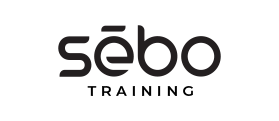Last Updated on March 3, 2025
The first thing you need to do before creating the Looker Studio report is to create the Search Console Data Sheet (SCDS) for the client. The instructions on how to create the SCDS can be found here.
Once you have created the SCDS you can follow the instructions below to create the client’s Looker Studio report from our pre-existing template.
You can find the current template we use here: https://docs.google.com/spreadsheets/d/1YXj2jBttVPd86Z_nC9nQ_eyMxfmCw5t-Gkmz8H7k-sc/edit#gid=0
And here is the direct link for the template we are using as recent as 9/19/2022.
https://datastudio.google.com/reporting/62672de2-50ee-4432-b132-c17289d5429c/page/mq5kB/edit
- Open the Looker Studio Report template using the Sebo Agency Account (or in the case of white label clients the account where we have access to Google Analytics etc.)
- Click the “make a copy button” towards the top right corner of the page – you have to be in view mode to see the copy button.
- You will now update each data source with the client’s data.
- Google Analytics (Universal) – make sure to use the right view
- The view name should include the client name if best practices were followed. If not, rename the data source to include the client name.
- Google Analytics (GA4)
- The GA4 property name should include the client name but if it doesn’t then rename the data source to include the client name.
- SCDS – Monthly Cumulative totals
- SCDS – Position Log
- Uncheck “Include Hidden Fields”
- Check “Include Specific Range
- Put in “A2:J” without the quotes in the range field
- Make sure that all of the data is “Number” and “Sum” except for “Query” which should be “Text” still. Update as necessary.
- Google Ads
- If they don’t have a Google Ads account don’t worry about this one
- Make sure to rename the data source to “*Client Name* Google Ads”
- Click the button once you confirm all of the sources have been updated.
- Rename the new report to the new client’s name.
- Replace the logo on the left with the client’s logo and resize as necessary.
- Look through each page making sure everything looks right
- Organic / SEO page
- The common issue this page sometimes is inflicted with are the key metrics in the yellow section. Sometimes the date range gets messed up. The correct date range dimension is “Date”
- Position Log
- You will always need to fix the last column of the position log by dragging the “Change From Mmm YYYY” field over the “Record Count” field to replace it.
- You should also make sure that all of the columns are using “Sum” and not “Count”
- Google Ads (PPC)
- If the client doesn’t have Google Ads then:
- Go to added datasources and delete the default template datasource
- Hide the Google Ads page from View Mode
- Select the Google Ads (PPC) button and move it out of the frame
(The best way to do this is to drag the selector tool from off the frame over the entire button and then shift click on the background to deselect it and then hit the right arrow key over and over until the button moves out of frame)
- Click the share button and switch to “Manage Access” and change the sharing method to “Anyone with the link can view” and then press the save button. Then copy the share URL to your clipboard.
- Take the report URL saved to your clipboard and paste it to the MC’s Email Automation sheet in the appropriate cell.
